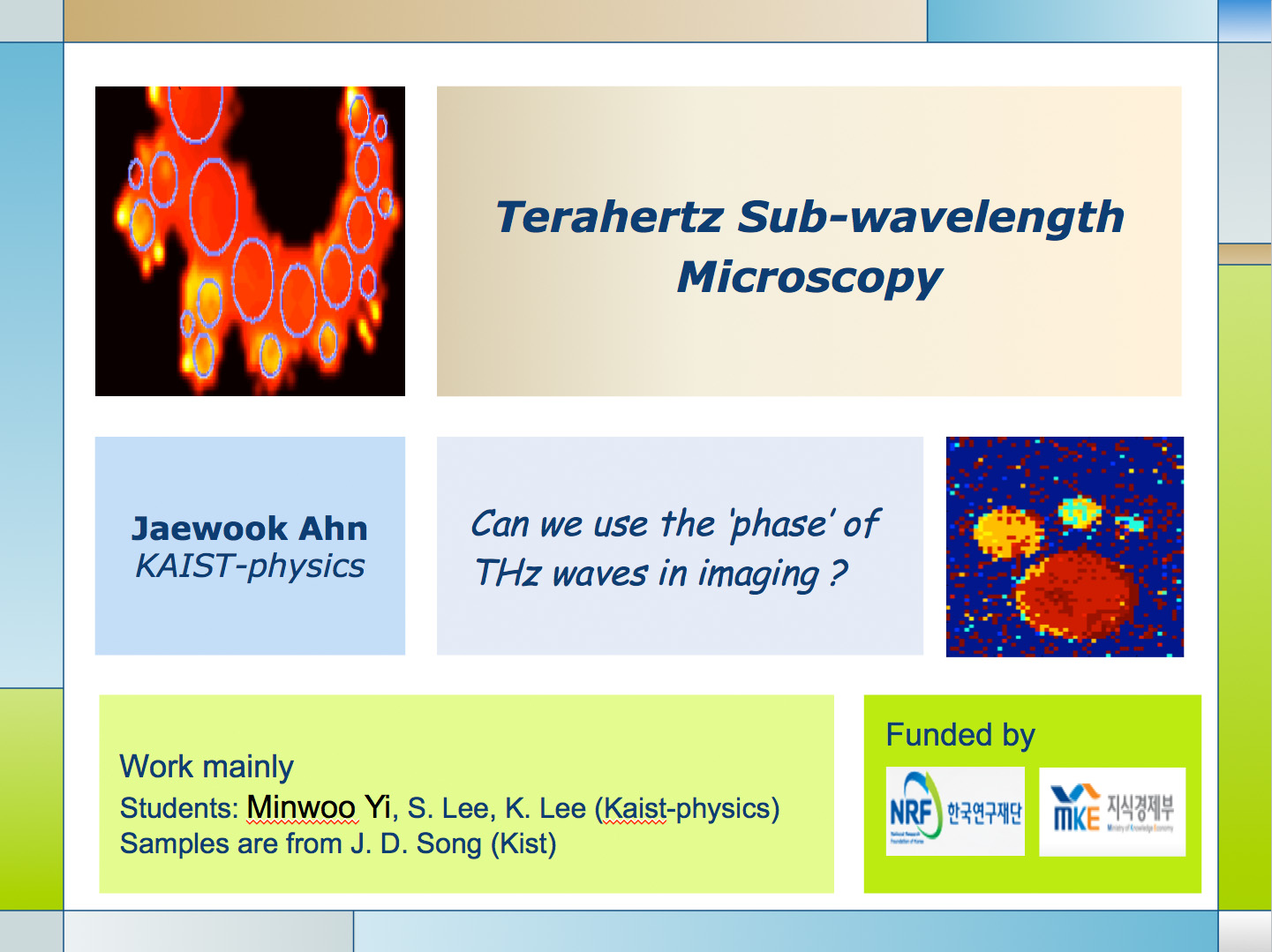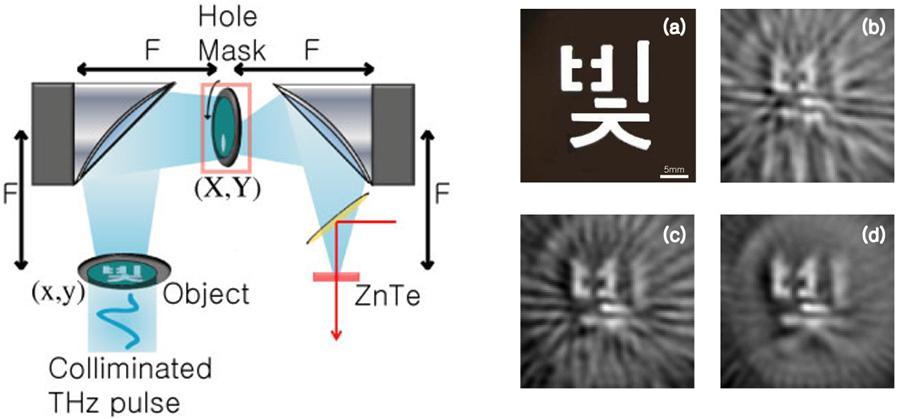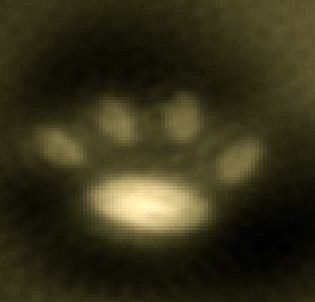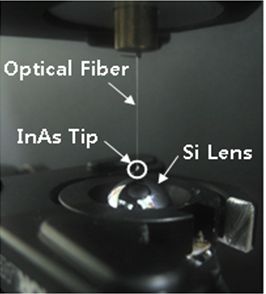Terahertz Optics
THz coherent optical computer
Single point terahertz imagery of 2D objects is demonstrated by exploiting the broadband nature of ultrafast terahertz wave in a coherent optical computing setup. In the devised imagery, a collimated terahertz beam is illuminated on an object and the scattered fields are measured through a spatial mask at the Fourier plane in a 4-f terahertz time-domain spectroscope. This arrangement allows conversion of radial spatial frequencies of the object to the temporal spectrum of the pulse. Hence, a 2D image stored in the terahertz waveforms can be readily obtained.
Optics Letters, Vol. 35, Issue 4, pp. 508-510 (2010)
single-pixel coherent diffraction imaging
We demonstrate single-pixel coherent diffraction imaging, whereby broadband terahertz (THz) waveforms passed through a slated phase retarder (SPR), diffracted from an object, were measured by a THz detector located in the far field. For 1D imaging, the fixed-location single-pixel broadband detector simultaneously measured all the spatial frequency components of the object because the frequency components of the source maintain a one-to-one correspondence with the object's spatial frequency. For 2D imaging, the angular position of the SPR enabled the diffracted THz wave to carry an angular projection image of the object. Thirty waveforms measured at different SPR orientations successfully reconstructed complex 2D images. http://apl.aip.org/free_media/issue_files/APPLAB/97_24.pdf
Terahertz waves emitted from an optical fiber
We report a simple method of creating terahertz waves by applying the photo-Dember effect in a (100)-oriented InAs film coated onto the 45-degree wedged-end facet of an optical fiber. The terahertz waves are generated by infrared pulses guided through the optical fiber which is nearly in contact with a sample and then measured by a conventional photo-conductive antenna detector. Using this alignment-free terahertz source, we performed proof-of-principle experiments of terahertz timedomain spectroscopy and near-field terahertz microscopy. We obtained a bandwidth of 2 THz and 180-mm spatial resolution. Using this method, the THz imaging resolution is expected to be reduced to the size of the optical fiber core. Applications of this device can be extended to sub-wavelength terahertz spectroscopic imaging, miniaturized terahertz system design, and remote sensing.



